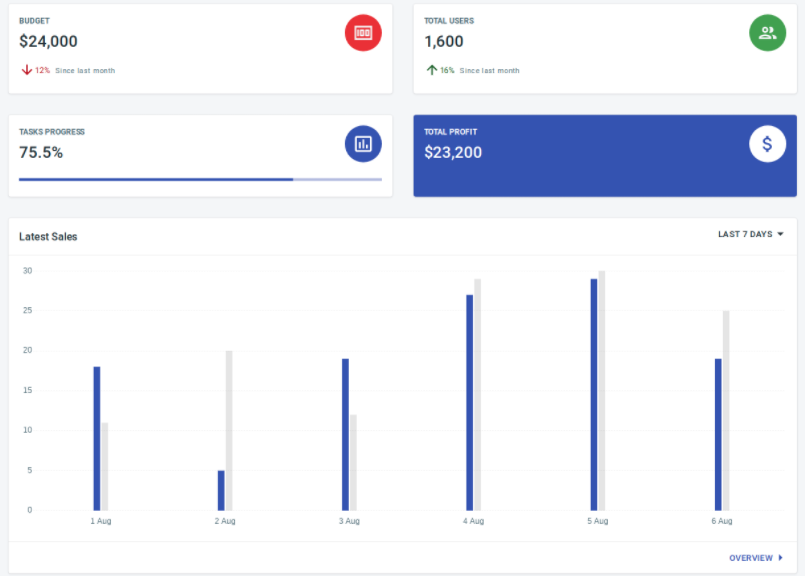NextJS Boilerplates
NextJS is a JavaScript framework that allows developers to create server-rendered web applications. It was created by the engineering team at WalmartLabs and has been released as open-source. NextJS runs on Node.js and uses React for both the view layer and the logic layer, powering high-performance apps with a minimal codebase size.
Here we present you some of the best NextJS boilerplates that you can use as an example when building your own apps or that you can even use to speed up the development of your projects.
Best NextJS Boilerplates
Next Right Now
Next Right Now is a production-grade boilerplate with Next.js 11, Vercel, and TypeScript. The project comes with multiple opt-in presets that are targeted towards Storybook, Airtable, GraphQL, Analytics, CSS-in-JS Testing, End to end testing, Internationalization, and more.
RAN
RAN is a boilerplate for React apps with GraphQL and Next.js. It offers hot-reloading, offline compatibility, and plugin support to help you produce high-quality products more quickly than before.
With powerful CSS-in-JS functionality that allows the distance between your logic and design source files to be minimized, it’s even easier for your team of frontend developers to create beautiful website user interfaces that are expressive on any device no matter how big or small the screen size is.
The separation of responsibility also means less code can make maintaining individual components of projects more efficient as well-meaning there won’t be large bursts of frustrations over trying to figure out what needs changing in which file when adding new features anymore!
Next.js Starter Project
If you want a head start on your next React single-page app, this project is for you! It has all of the features that you need including authentication via email, Facebook, Twitter, and Google+ as well as account management that allows updates to details as well as linking and unlinking accounts.
Additionally, there is session support with secure cookies to avoid CSRF attacks and symbols to maximize your application exposure across social media platforms. We’ve also made sure you can incorporate popular UI frameworks like bootstrap or foundation which means whether you’re developing for web or mobile apps (including PWAs), we’ve got your back.
Next Blog Firestore
Next.js is a framework for building high-performing, low latency web applications with server rendering. The app builds on React by letting users create custom content management systems built with React, Mobx State Tree, and Styled Components that are optimized for SEO best practices.
Cloning this repo not only gives you Next’s entire codebase but also keeps your development environment up to date so it doesn’t become stale due to the rapid pace of change in JavaScript frameworks.
Featuring Firebase Firestore API integration, you don’t have to sacrifice powerful search capabilities or querying abilities just because your app isn’t backed by a traditional database anymore!
Devii
Devii is a NextJS boilerplate that makes it easy to write and manage your website’s content. It comes with a variety of features that make it an ideal solution for businesses of all sizes.
The Markdown-based static-site generator is perfect for bloggers and businesses that want to keep their site’s content management simple. You can easily add new blog posts to the /md/blog folder, and NextJS will take care of compiling them into a static website.
NextJS also provides hot reloading so you can see your changes take effect in real-time. This makes it easy to experiment with new ideas or code without having to worry about losing your work. Additionally, the SEO best practices built into Devii ensure that your site is ready for the search engines and your visitors.
Devii’s exports can be deployed as fully static assets, making it easy to customize your website. You can change anything you want using custom code, CSS styling, or images – no more limitations on what you can customize!
KNESTS Stack

The KNESTS stack is a full-stack boilerplate that provides everything you need to get started with web development. It includes Docker, NodeJS, Typescript, GraphQL, React, and Material-UI so that you can get up and running quickly.
This stack is perfect for hackathons or other project starter needs. The Docker component ensures that your application will be portable and consistent no matter what environment you are working in. NodeJS provides a fast and scalable platform for developing your applications.
Typescript offers type safety and code generation features to make development easier. GraphQL provides a powerful API platform with which to build your applications. React allows you to create reusable components so that your UI will be easy to maintain. Finally, Material-UI makes it easy to create great-looking apps and components.
Why is NextJS Popular?
The goal of NextJs is to make it easy to build fast, scalable single-page applications using React without worrying about all the plumbing involved in building an app from scratch. In other words, NextJs facilitates rapid development of modern web applications with its simple API and powerful features such as Webpack support out-of-the-box which allow you to bundle your application into one or more files for faster loading.
NextJS supports server-side rendering for your React components, which means that you can send something to the user’s screen even before JavaScript has executed. This ensures users will see pages as fast as possible, even if they are using a device with poor network connectivity. NextJS comes with support for various webpack loaders and plugins, allowing you to easily bring all your favorite assets into the picture.
NextJS also has TypeScript support, which is very helpful for developers with an object-oriented programming background. With TypeScript, you can use ES6+ features alongside type checking to keep your application safe and stable.
Getting Started with NextJS is easy, as it requires only minimal requirements, a simple installation, and a small learning curve.
These are two of the many reasons why NextJS is becoming very popular these days.